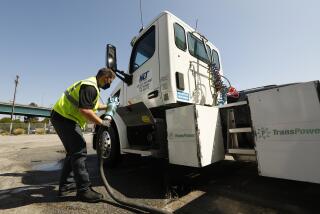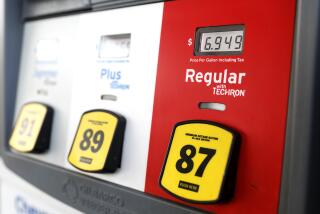Uber upholds capitalism, (possibly) learns downside of price gouging
The ride-sharing firm Uber takes great pride in hewing rigorously to libertarian, let-the-market-decide business principles. It’s unapologetically in love with supply-and-demand, or “surge,” pricing. When demand for rides peaks, such as on New Year’s Eve, so do Uber’s fares. What does Uber say about price-gouging complaints? It says: if you don’t like it, walk.
But Uber may just have discovered that there are limits to the surge. During a ferocious winter storm on Saturday night it ticked off Manhattanites no end with fares that ran seven or eight times normal rates. One passenger allowed the website gothamist.com to publish his receipt, $94 for an 11-minute trip covering less than two miles.
Uber has annoyed transportation regulators in several cities by arguing that it’s exempt from transit rules, or should be, but it may have stretched the envelope by annoying its core clientele, which is rich New Yorkers. Even Jerry Seinfeld’s wife broadcast her indignation at being charged $415 to get her child to a bar mitzvah.
Uber’s defense is that it needed to charge so much more to encourage its drivers to stay on the job, despite the wretched road conditions. But what the episode may demonstrate is not so much the virtues of supply-and-demand pricing but the virtues of having a tightly regulated taxi system to complement services like Uber. Let Uber put taxis out of business, as sometimes seems its intention, and there’d be no check on its “surge” pricing and no way at all for ordinary people to get around.
The New York case also has revived a familiar debate about the pros and cons of price-gouging, that impolite term for charging what the market will bear. Similar debates arose after Superstorm Sandy, when New Jersey charged a gas station operator for gouging customers, and Hurricane Katrina, when the destruction of oilfields in the south led to purported gouging nationwide in oil and gas.
Price gouging has its fans. Chiefly they’re economists or economics pundits, who point out that it works great in textbooks, but they don’t worry too much about what it means for consumers in the real world. Those who do worry, like politicians, assert that those who carry supply-and-demand pricing to extremes, especially during emergencies, belong in jail.
When we’re talking about price changes during disasters or other emergencies, the politicians have the right side of the debate. That’s because individuals don’t all have equal standing in the marketplace. In extreme conditions, the market favors the wealthy and powerful even more than normally. So the market needs to be regulated to keep the winners from taking all.
You’ll hear it said that price-gouging rules hurt the average consumer because they discourage suppliers from bringing more goods into a stricken community or retailers from staying open in harsh conditions--why do so if they don’t get a higher price in return for the extra effort?
But that’s where the abstract and the real diverge. Supply-and-demand pricing tends to work at the margins and goes out of whack when conditions are extreme--say during a major snowstorm or other natural disaster. That’s when customers have so little choice about what to buy and where, or no choice, that vendors essentially acquire a monopoly. As Austan Goolsbee, later to become President Obama’s chief economist, observed in 2005 after Katrina, “The idea behind anti-gouging laws is to help people who were stuck without alternatives through no fault of their own.”
When it’s every man for himself, “surge” pricing doesn’t necessarily ensure a fairer distribution of goods, especially necessities--it just ensures that people with the most cash satisfy their needs and assuage their fears by overbuying, and those at the other end of the scale still get nothing, or certainly less than they need. Raising the price of water, say, by 500% might encourage some buyers from stocking up as much as they can, but it might do so marginally. The consequence, however, might be to deprive poorer families of any water at all.
Politicians, for their part, aren’t entirely insensitive to the economics of price. New Jersey’s laws allow retailers to jack up gas prices by as much as 10% in advance of a storm. That’s where the legislature has fixed the gouging threshold. One can argue if it should be higher or lower, but one should recognize that there are, indeed, reasonable limits to what the market should bear.
One other factor tends to limit gouging: fear of consumer rage. That’s a fear Uber hasn’t yet acquired, perhaps because it doesn’t think it needs to. At the moment it’s the big cheese in ride-sharing and its typical clients can afford to shoulder the surge (or charge it to their expense accounts), griping all the way. But what happens when its reputation for caring nothing about customer relations starts biting back, as it surely will some day? There’s always room for a rival billing itself as a “kinder, gentler Uber,” and this weekend may just have given some clever entrepreneur an idea.







